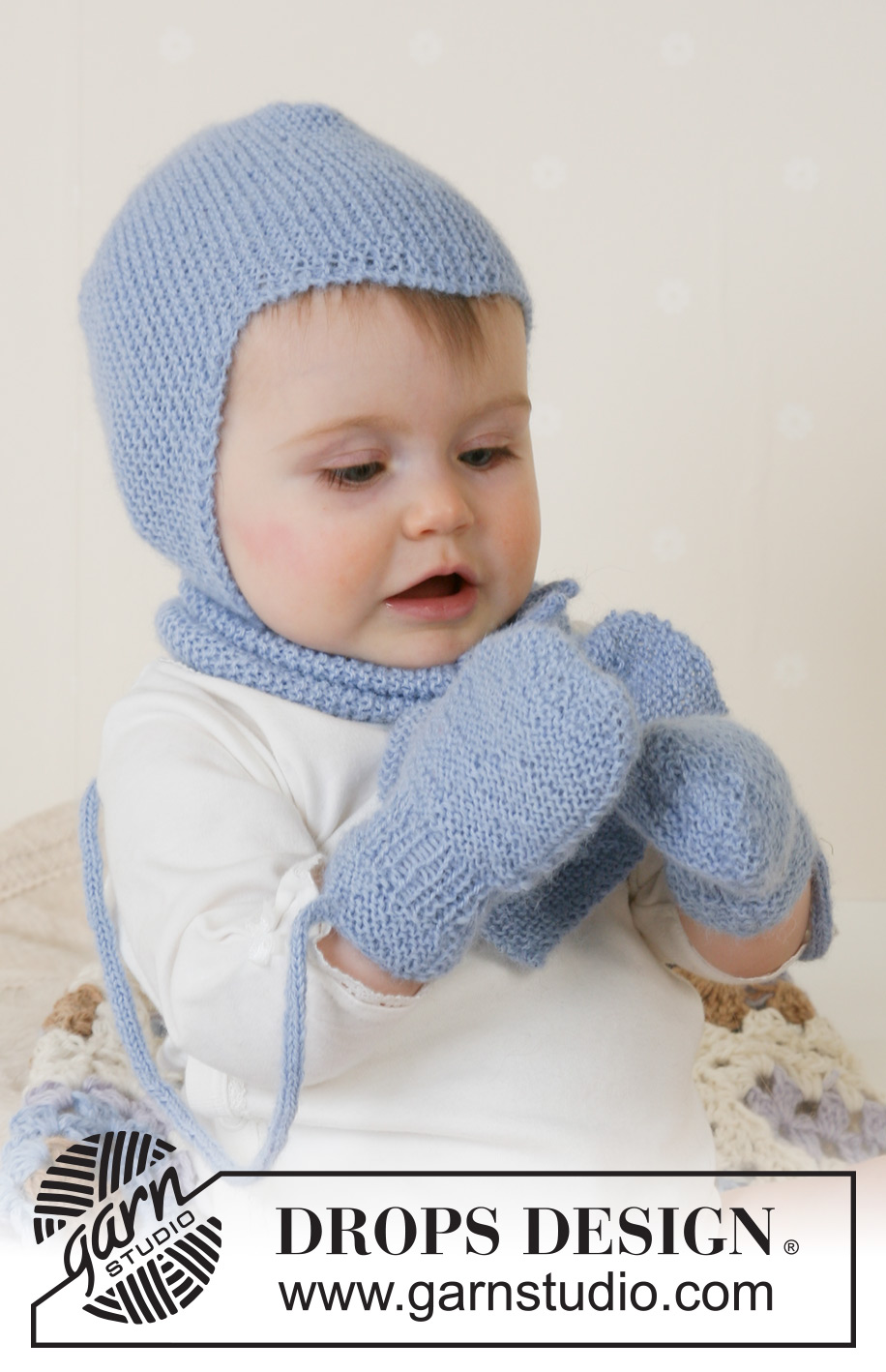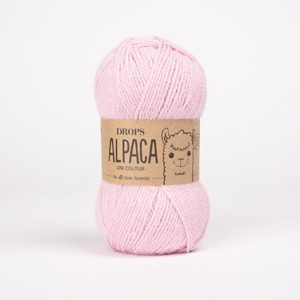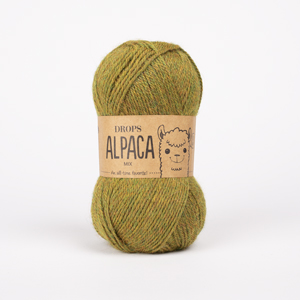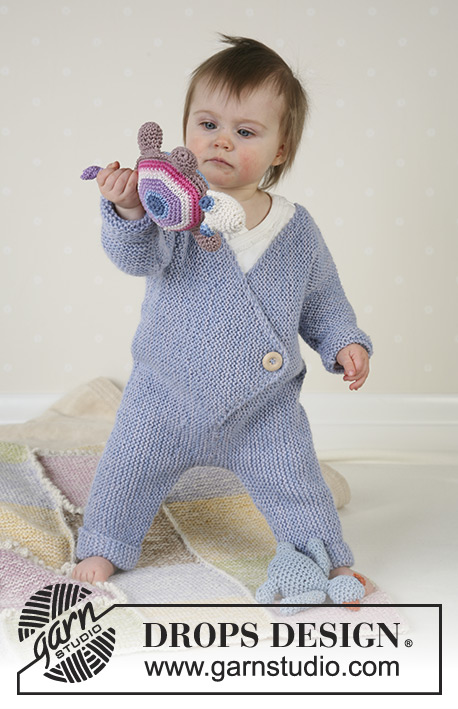Comments / Questions (162)
![]() Eeva wrote:
Eeva wrote:
Hei! Löysin video-ohjeen myssyyn, kiitos en tarvitse edell. viestiin vastausta. Terveisin Eeva
24.06.2025 - 15:21
![]() Eeva Laajalahti wrote:
Eeva Laajalahti wrote:
Hei! Mikä on luontisilmukoiden jälkeen aloitus kerros, seuraava nurjapuoli vai seuraava oikein aloituskerros? Miksi myssystä ei ole kuvaa takaa tai kaavaa minkä mallinen neuleesta tulee? Terveisi Eeva
24.06.2025 - 14:04
![]() Ann Karin Solheim wrote:
Ann Karin Solheim wrote:
Hei, når jeg skal begynne med hver 4. Pinne, skal jeg strikke 3 pinner først eller begynne økningen på høyre side med en gang?
13.12.2024 - 09:45DROPS Design answered:
Hei Ann Karin. Ville ha økt på 1. pinne og så strikket 3 pinner uten økninger. Til denne luen er det laget både en Video og en Leksjon på hvordan luen strikkes. Klikk på Video eller Leksjoner til høyre / eller under bildet. mvh DROPS Design
16.12.2024 - 10:18
![]() Melanie wrote:
Melanie wrote:
Hallo, eine Frage zur Schnur für die Mütze. Unten in der Anleitung steht mit Nadel ne. 2.5 und einem Faden 4 Machen anschlagen. Oben bei Hilfen steht mit Nadel nr. 4 und 2 Fäden 4 Maschen anschlagen. Was ist richtig? Danke für die Hilfe.
08.12.2024 - 14:57DROPS Design answered:
Liebe Melanie, Schnurr strickt man mit 1 Faden und Nadel 2,5 - Anleitung wird hier korrigiert, danke für den Hinweis. Viel Spaß beim Stricken!
09.12.2024 - 09:00
![]() Hilde-Margrethe Larsen Blindheim wrote:
Hilde-Margrethe Larsen Blindheim wrote:
Skal strikke str 12 til 18 mnd. Holder det med 100 gr garn til hele settet? Lue, sjal og votter? Mvh Hilde-Margrethe
07.12.2024 - 11:56DROPS Design answered:
Hei Hilde-Margrethe. 100 gram skal være nok :) Men vil du helgardere deg, kjøp et ekstra nøste, så kan du strikke et par sokker også :) mvh DROPS Design
10.12.2024 - 10:21
![]() Marie wrote:
Marie wrote:
Jeg er ved at strikke djævlehuen, men når jeg kommer til dette punkt Nu tages der 1 m ud i højre side på hver 4.p og 1 m ind i venstre side på hver 2.p til arb måler 15½-16½-17½ (18-19) cm fra opslåningskanten. Sæt en mærketråd i hver side af arb. Står der ikke udførligt hvordan jeg skal tage ind og ud, altså hvor langt inde på pinden fx?
29.08.2024 - 11:17DROPS Design answered:
Hej Marie, du gør på samme måde som du har gjort hele tiden. Se videoen vi har lavet helt specifikt til denne søde djævlehue :)
29.08.2024 - 14:10
![]() Erika Reinhold wrote:
Erika Reinhold wrote:
Schal: Dann alle M. wieder zusammenstricken, indem man 1 M. von der Sicherheitsnadel und 1 M. von der Stricknadel zusammenstrickt = 24-26-28 (30-32) M. Das kann ja nicht stimmen, weil sowohl auf der Nadel, als auch auf der Sicherheitsnadel jeweils nur 13 Maschen sind. Die Maschen müssen einzeln abgestrickt werden
25.04.2024 - 17:57DROPS Design answered:
Liebe Frau Reinhold, ja genau, diese Maschen stricken Sie abwechslungsweise ohne sie zusammenzustricken, dh spiegelverkehr als am Anfang. Eine Korrektur erfolgt, danke für den Hinweis. Viel Spaß beim Stricken!
26.04.2024 - 07:42
![]() Rixt wrote:
Rixt wrote:
Hello I am relatively new to knitting, but already finished one of your beautiful baby sock patterns! Now I wanted to make something else for our baby, this hat with mittens, but looking at the wool I saw that you have the same amount of stitches in the gauge as with the socks I made, but almost the double amount of rows. (with the same needle size) How is that possible, somehow that does not make sense to me. Thank you very much for helping :)
23.01.2023 - 20:32DROPS Design answered:
Dear Mrs Rixt, your socks might have been worked in stocking stitch, while the hat is here worked in garter stitch, so that you will get another number of rows (you need more rows in garter stitch than in stocking stitch for the same height), ie you need here 52 rows (26 ridges) in garter stitch to get 10 cm. Happy knitting!
24.01.2023 - 12:02
![]() Gillian wrote:
Gillian wrote:
Can you advice pattern for Adult sizes please ?? As would like to make one for myself thanks Gillian
03.01.2023 - 08:59DROPS Design answered:
Dear Gillian, sure you will find all our patterns for similar hats here including patterns for adult, children and baby. Happy knitting!
03.01.2023 - 09:44
![]() Larissa wrote:
Larissa wrote:
Hallo! Ich stricke Schal für 6-monatiges Baby. Welche lange (ungefähr) hat der fertige Schal?
20.11.2022 - 12:54DROPS Design answered:
Liebe Larissa, in die 2. Größe ist der Schal ca 47 cm lang. Viel Spaß beim stricken!
21.11.2022 - 09:15
Baby Aviator Hat#babyaviatorhat |
|
 |
 |
Set of knitted helm hat, scarf and gloves for baby in DROPS Alpaca. Sizes from 1 month to 4 years.
DROPS Baby 14-16 |
|
|
Knitting tension: 26 sts x 52 rows on needles size 2.5mm in garter sts = 10 x 10 cm. Garter sts (back and forth on needle): Knit all sts. Tube knitting: *K1, put thread in front of piece, slip 1 st as if to purl, put thread behind piece*, repeat from *-* on all rows. This creates a round string. HAT: Cast on 33-38-42 (46-50) sts on needle size 2.5mm. Knit garter sts, at the same time inc 1 st at the right side and dec 1 st at the left side as follows: 1st row (=right side): K2, yo (= 1 inc), knit until there are 4 sts left on row and K2 tog, K2. 2nd row (=wrong side): Knit (knit yo into back of st). Repeat these two rows until piece measures 5.5-6-6.5 (7-8) cm. Now dec 1 st at the right side and inc 1 st at the left side as follows: Right side: K1, slip 1 st as if to knit, K1, psso, knit until there are 2 sts left, yo, K2 Wrong side: Knit (knit yo into back of st). Repeat these two rows until piece measures 11-12-13 (14-16) cm. Continue to inc 1 st at the right side on every 4th row and dec 1 st at the left side on every other row until piece measures 15.5-16.5-17.5 (18-19) cm. Insert a marking thread each side. Continue as follows: Dec 1 st at the right side on every 4th row and inc 1 st at the left side on every other row until piece measures 20-21-22 (22-22) cm. Now dec 1 st at the left side on every other row and inc 1 st at the right side on every other row until piece measures 25.5-27-28.5 (29-30) cm. Dec 1 st at the right side on every other row and inc 1 st at the left side on every other row until finished measurements. = 31-33-35 (36-38) cm. Cast off. Assembly: Back of hat = the side of piece with 2 whole points and 2 half points. The middle of the 3 whole points on the other side of the hat = point sitting at the middle of the forehead. Sew seams together with small, neat sts as follows: Sew tog back of hat by sewing tog the first half point with the first half of the first whole point. Now sew tog the other half of the first whole point with the first half of the second whole point. Now sew tog the other half of the second whole point with the last half of point. Sew hat tog mid back. String: Cast on 4 sts on needle size 2.5mm. Knit tube as described above. Cast off when tube measures approx 16-18-20 (22-24) cm. Knit another tube and attach strings to each side of hat. SCARF: Cast on 4 sts on needle size 2.5mm and knit garter sts, at the same time increasing as follows: Right side: Knit 2 sts in first st Left side: Knit 2 sts in last but one st. Inc on every other row a total of 10-11-12 (13-14) times = 24-26-28 (30-32) sts. Knit garter sts until piece measures 8-9-10 (11-12) cm. Knit next row as follows: *K1, put 1 st on safety pin (or cable needle) behind the piece*, repeat from *-* until the end of row. There are now 12-13-14 (15-16) sts on row and 12-13-14 (15-15) sts on safety pin/cable needle. Knit 4-4-4 (5-5) cm garter sts over sts on needle and put these on a new safety pin/cable needle. Put sts from the first safety pin/cable needle back on needle and knit garter sts over these until this piece is of the same length. Put the 2 pieces together again by knitting 1 st from needle and 1 st from safety pin/cable needle alternately until all sts are back on needle = 24-26-28 (30-32) sts. Knit garter sts until piece measures 40-42-46 (50-54) cm. Continue in garter stitch at the same time as decreasing in each side by knitting the 2 second outermost sts together. Dec like this on every 2nd row until there are 4 sts left on needle. Cast off. The scarf measures approx 44-47-51 (55-60) cm. MITTENS: Garter sts (on circular needle): Knit 1st round, purl 2nd row. The 3 bigger sizes with thumbs, the 2 smaller sizes without. The mitten is knitted round on double pointed needles. Loosely cast on 34-36-38 (40-42) sts with Alpaca on needles size 2.5mm and knit 12 rounds garter sts – see explanation above – at the same time on the last round dec evenly to 28-30-32 (34-36) sts. Continue in Rib with K1/P1. When piece measures 3-3-3 (4-4) cm knit garter sts, at the same time on 1st round increasing evenly to 30-33-36 (39-42) sts – insert a marker and measure piece from here from now on. The 3 bigger sizes: After 1 (2-3) cm, put the last 5 (5-6) sts on round on a thread for thumb. Cast on 5 (5-6) new sts over the thread on next row. All sizes: When piece measures 6-7-8 (9-10) cm dec as follows on next knitted round: *K1, K2 tog*, repeat from *-* until the end of round = 20-22-24 (26-28) sts. *Purl 1 round, on next round knit tog all sts 2 and 2*, repeat from *-* 1 more time. Pull a double strand of Alpaca through remaining sts, pull tight and sew. Thumb: Put the 5 (5-6) sts from thread back on double pointed needles size 2.5 mm and pick up 6 (6-7) sts behind these = 11 (11-13) sts. Knit garter sts until thumb measures 3 (4-5) cm. Now knit all sts tog 2 and 2. Pull thread through remaining sts and sew. Knit another mitten, but knit the thumb the other side (applies to the 3 bigger sizes). String: Cast on 4 sts using Alpaca on needles size 2.5 mm and knit a tube as follows: *K1, put thread in front of piece, slip 1 st as if to purl, put thread behind piece*, repeat from *-* on all rows until string measures approx 62-67-74 (86-96) cm (length between child’s wrists). Cast off and attach string to each mitten. |
|
Have you finished this pattern?Tag your pictures with #dropspattern #babyaviatorhat or submit them to the #dropsfan gallery. Do you need help with this pattern?You'll find 20 tutorial videos, a Comments/Questions area and more by visiting the pattern on garnstudio.com. © 1982-2025 DROPS Design A/S. We reserve all rights. This document, including all its sub-sections, has copyrights. Read more about what you can do with our patterns at the bottom of each pattern on our site. |
|



























































Post a comment to pattern DROPS Baby 14-16
We would love to hear what you have to say about this pattern!
If you want to leave a question, please make sure you select the correct category in the form below, to speed up the answering process. Required fields are marked *.